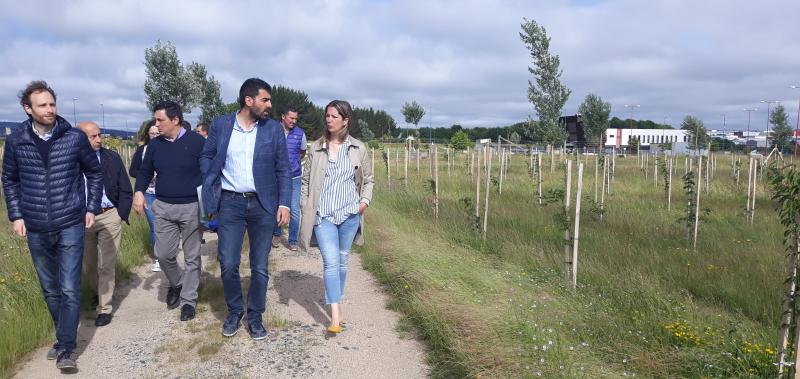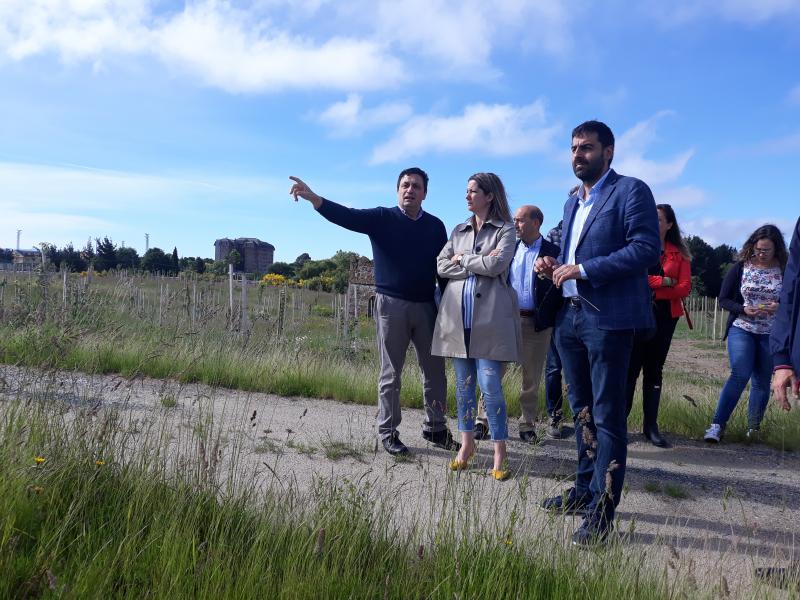Reception of hardwood plantations and energy crops in Gándaras

Today the act of reception of the works of installation of demonstrative plots for native hardwood forest and experimentation with energy crops in urban environments for the production of solid biofuels in the form of chips, located in the Gándaras industrial park, took place.
These two actions are part of the LIFE Lugo+ Biodynamic project, which aims to implement an innovative urban planning strategy in the city of Lugo and achieve urban areas adapted to the effects of climate change.
The projects were prepared by the members of the the City Council of Lugo, the coordinating partner of the project, with the collaboration of Sustainable Forest Management Unit of the University of Santiago de Compostela (UXFS). In total, there are 5 hectares of new green areas with more than 13.000 new plants.
The demonstration plot of native hardwoods has a size of 4 ha, located in the southern area of the industrial estate of Gándaras. They carried out typical soil conditioning work there and then planted 4.115 native hardwood trees, including oak (Quercus robur L.), ash (Fraxinus excelsior L.), maple (Acer pseudoplatanus L.) and cherry (Prunus avium L.). In addition, a hedge trimmer was established at the edge of the plot.
The aim of this native hardwood plot is to create a green area that will serve as a demonstration of the potential for producing quality wood as a renewable and recyclable, carbon-neutral, highly energy-efficient and high-quality product for various industrial processes.
In relation to the experimental energy crops plot, attached to the hardwoods plot, 9.000 plants of different species were installed, specifically 2 poplar clones (Trichobel and Raspalje) and Miscanthus x giganteus were used. The UXFS of the University of Santiago has a good experience in research with these species.
This plot of land aims to contribute to promoting the idea that the urban environment can efficiently produce part of the biofuels used in it, thus promoting a substitution effect of fossil biofuels for thermal use such as heating. This action is presented as a revulsive way to show the potential of energy crops.







